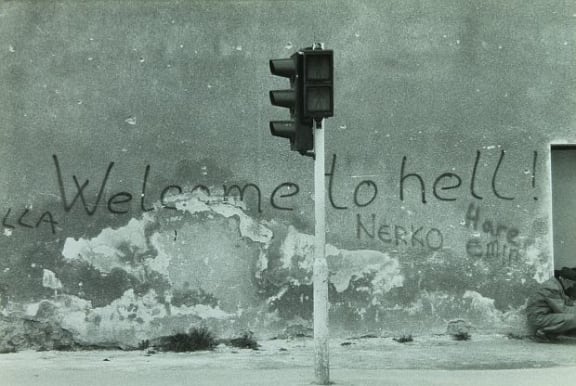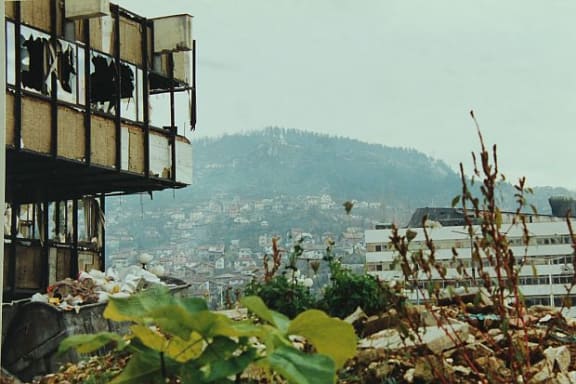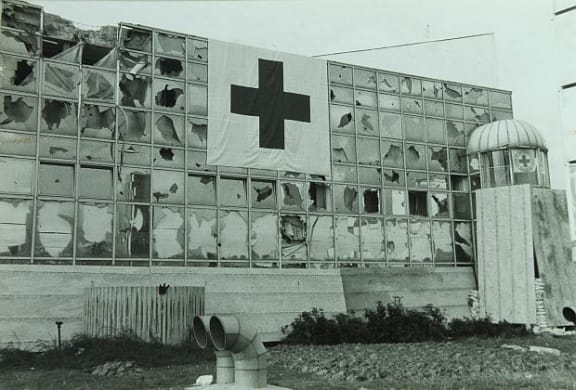“Everywhere you looked (there was) mortar damage, RPG damage, many bullet holes. Sarajevo was beaten up, and sore, and ugly.”
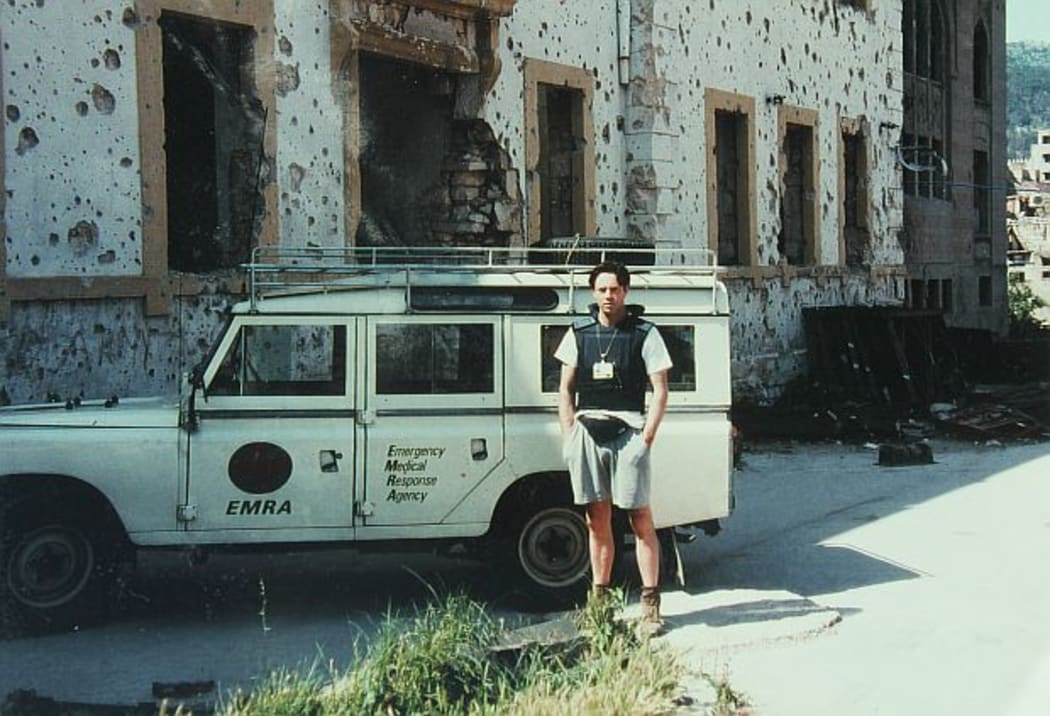
Tony Gardner in front of the team's Land Rover nicknamed "The Beast" Photo: Tony Gardner
In 1993 Tony Gardner was just another Kiwi on his OE when a friend talked him into a dangerous plan – transporting medical supplies into the besieged city of Sarajevo. The Bosnian War was raging and the sustained encirclement and bombardment of the historic city appalled the watching world.
Tony was living in Munich and at a dinner party one night an American friend named John Ashton asked him what he thought about the war. Tony had to admit that he didn’t know very much about it. But a seed had been planted.
“From somewhere came the idea that we should travel down into Croatia to refugee camps there and take people some winter clothes. And just that relatively simple experience, I suppose, was the beginning of it.”
Tony had no medical, charity or NGO experience, while John Ashton had worked as a journalist in Beirut and was in Munich recovering from a gunshot wound he had received in Sarajevo. After that first short Croatian trip Tony, John Ashton and another Kiwi, John Coghill, began to talk about going instead to Bosnia and taking medical supplies instead of clothes. Tony readily admits that they had very little in the way of a plan and even less of an idea of what they were doing. But the naivety of their approach was also its virtue.
“It’s a simple idea to think that you can help people. And if you keep it simple, then your chances of having an effect are greater.”
The three men formed the Emergency Medical Response Agency, or EMRA. They hustled hard for publicity, support, money and medicine. Soon they were ready and after loading up their Land Rover – known, not entirely affectionately, as The Beast due to its size (and its personality) – they began their first trip into the Bosnian war zone. Taking a series of back roads, they hoped to avoid as many military checkpoints, manned by ill-disciplined and dangerous militia forces, as possible.
Their first stop was a ruined church south of the city of Mostar: one of the first indications of the true nature of the conflict. To Tony’s eyes, it was obvious that the damage was not just the accidental result of battle.
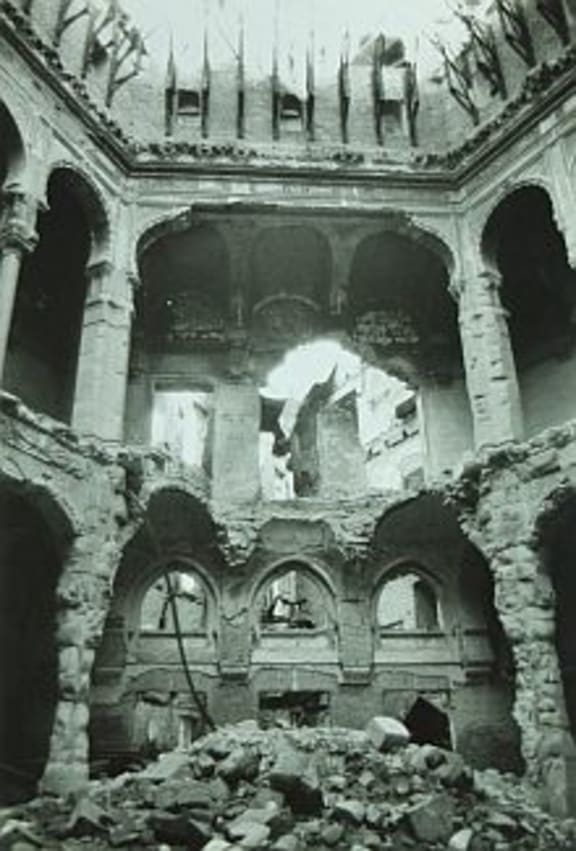
A ruined church south of the city of Mostar. Photo: Tony Gardner
"The three bells in the peak of the roof were shot almost completely to pieces, the target of intense gunfire. It was a completely shocking sight, piercingly vivid against the clean blue sky. Testimony to the wanton destruction and tribal hatred.
In Vitez we took medical supplies to the Muslim and Croat sections of the city. These groups have fought bitterly –3 days ago 3 Muslim women were killed by a grenade. I met a 17 year old Muslim man who had lost his father, mother, brother, sister and aunt."
From Mostar they carried on into Sarajevo. But before they could enter the city, they had to pass through Checkpoint Charlie, controlled by a notorious militia fighter named Sonia.
Checkpoint Charlie was known as a site where murders had taken place and Sonia was accused of ordering them. Tony and John Ashton were nervous as they were waved off the road by AK47-wielding militia members. On the road in front of them were dark brown bloodstains. While it was unlikely they would be killed, it was entirely possible that the Serb militia would confiscate their vehicle (and all its precious contents) and simply dump them on the road and tell them to walk. Just then, a large, stern-looking woman emerged from one of the huts.
“And John Ashton said ‘That’s Sonia!’”
Sonia made Tony get out of the vehicle and open up the boot. Searching amongst their supplies, she quickly found something she wanted. It took a confused Tony Gardner a few moments before he realised she was pointing to a box of tampons. With relief he offered her first one box, and then rushed to give her all they had. A delighted Sonia waved them on.
Once free, the team made their way along the infamous sniper’s alley and into Sarajevo. Tony remembers how the city looked.
“Hurt. Everywhere you looked (there was) mortar damage, RPG damage, many bullet holes. Sarajevo was beaten up, and sore, and ugly.”
This was a brutal ethnic war, fought between neighbours, friends, and relatives, and across seemingly unbridgeable divides.
“I remember being in Travnik and whenever the Muslim call to prayer would go across the town, immediately the gunfire would increase.”
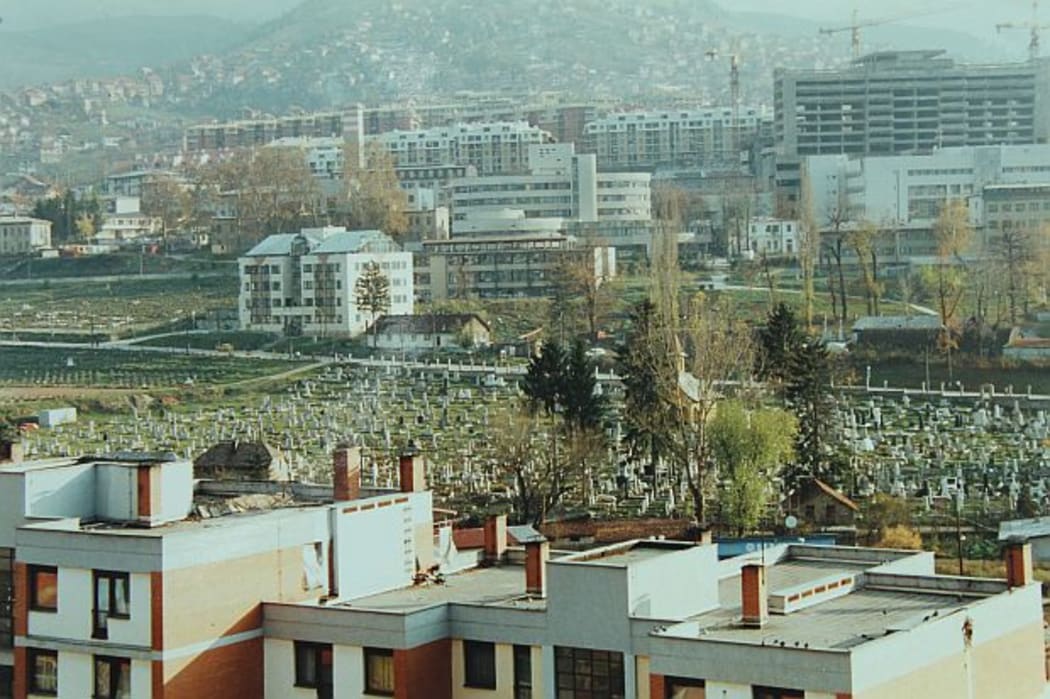
A sports field in downtown Sarajevo transformed by the siege into a graveyard Photo: Tony Gardner
Diary Entry 28.05.94
"5.40am. It’s light. At 4.00am I was shocked awake by machine-gun fire. Jesus!! Periodically more gunfire echoes around us. It’s not far away, but I assume it’s drunk soldiers. Later – constant sporadic gunfire, I can’t sleep for any length of time. It’s not a surprise anymore. John is snoring."
When in Sarajevo, the team would hire locals to act as interpreters. One was a young Serbian woman named Gorsze and getting to her home involved crossing one of the most dangerous areas in the city. Body Parts Bridge had earned its nickname from the two snipers who targeted it. They would fire on pedestrians crossing the bridge, aiming not to kill, but instead to wound. The victim would be left writhing on the ground and occasionally shot several more times to inflict even greater suffering – and to terrorize any onlookers. A very frightened Tony was crossing the bridge one day with Gorsze when she tried to reassure him.
“Gorsze tells me, ‘Look, I know one of the snipers. He used to live in our neighbourhood. In fact I think he used to fancy me. I don’t think he’ll shoot me’. Of course, I immediately think ‘If he fancies her and I’m walking with her and he’s working today, that may not be a good outcome.'”
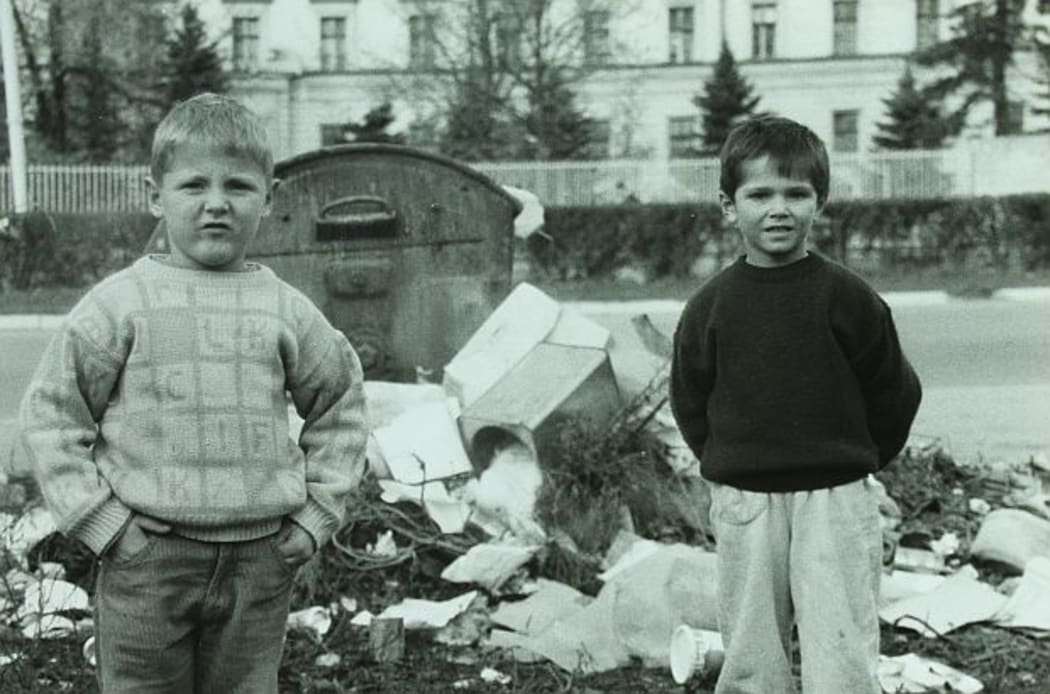
Young boys in Sarajevo Photo: Tony Gardner
Diary Entry 1.06.94
"We went out last night in Sarajevo, though only until 10pm because of the curfew. The city was absolutely alive with young people out socialising, quenching their thirst for a normal social life. Everyone I met was very friendly and philosophical about their experiences and situation, despite the pain and death they have lived with for over two years.
Once again I am struck by how things are now 'so much better' in Sarajevo but while I was there I heard and saw shell explosions by day and night, along with sniper and machine-gun fire."
The team travelled into Sarajevo and other Bosnian cities several times over the following year. They tried to be non-partisan in their work, delivering aid to whoever required it. In between, they worked hard to raise awareness of the war through media interviews and by lobbying various governments. In time, the strain began to catch up with Tony.
“I’d flown up to the military base in Frankfurt and was catching the train back down to Munich. I started just crying on the train in front of people.” Tony is frank about the emotional highs and lows of working in a war zone.
“There is adrenalin in danger. But it’s quite addictive stuff. At one level I grew to look forward to going in. Between going in, I felt flat. I know it’s perverse and some people won’t understand, but it’s real, it’s addictive.”
For a tired and increasingly troubled Tony Gardner the end was approaching. His breaking point came one evening just before Christmas in 1994. Tony set out from where he was staying to walk to a United Nations base for a shower and some food. But before he’d gone far, he noticed something odd.
“I heard a sort of fluting, flitting sound above me and didn’t know what the sound was. And I actually stopped walking. Further up the bank the grass started to explode. These bits of grass flying up started to come down towards me. Then it all dawned on me.”
Tony had caught the attention of a machine gunner operating in the hills around the city. “The sound arrived, that machine gun sound, that heavy, percussion, bang, bang, bang, bang, bang. I desperately wanted to fall to the ground, to roll and to move and it felt like gravity had decided to stop working for a moment. And so the fear, the raw fear, that you’re helpless, you can’t do anything. And then I am on the ground, and I am rolling, and then I am up and I am running.” It had been a very near miss, but it was close enough. He was done.
Tony left Sarajevo on Christmas Eve 1994, on what was to be the last flight out of the city for some time. He turned down an offer of employment from the United Nations and instead decided to go home. Tony settled in Wellington, got a job and met a girl. But the war wasn’t finished with him yet. An emotional year followed, with frequent, unexpected bouts of crying and an obsessive need to consume news stories about Bosnia. Slowly, the symptoms faded and today he says he has next to no problems when remembering or talking about his experiences.
The siege of Sarajevo was finally lifted in 1995. More than 12,000 people had died. Christmas 2014 will mark the twentieth anniversary of Tony Gardner’s departure from Sarajevo. He has never been back to the country now known as Bosnia and Herzegovina, but hopes, someday, to return.
